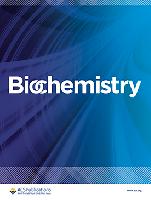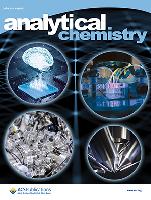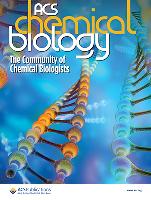Fusheng Guo, Yihui Gao, Xiaobao Li * and Xiaoguang Lei ,*Molecules 2022, 27(24), 8968 https://doi.org/10.3390/ molecules27248968
Acetaminophen (APAP) toxicity is a common cause of hepatic failure, and the development of effective therapy is still urgently needed. Farnesoid X receptor (FXR), a member of the nuclear receptor superfamily, has been identified as a master gene for regulating enterohepatic metabolic homeostasis and has proven to be a promising drug target for various liver diseases. Through high-throughput chemical screening, the natural product 2-oxokolavenol was identified as a novel and selective FXR agonist. Further investigations revealed that 2-oxokolavenol exerts therapeutic efficacy against APAP-induced hepatocyte damage in an FXR-dependent manner. Mechanistically, 2-oxokolavenol forms two hydrogen bonds with M265 and Y369 of human FXR to compatibly fit into the ligand binding pocket of FXR, which potently leads to the recruitment of multiple co-regulators and selectively induces the transcriptional activity of FXR. Our findings thus not only reveal the direct target of natural product 2-oxokolavenol, but also provide a promising hit compound for the design of new FXR modulators with potential clinical value
Sodium glucose co-transporters (SGLT) harness the electrochemical gradient of sodium to drive the uphill transport of glucose across the plasma membrane. Human SGLT1 (hSGLT1) plays a key role in sugar uptake from food and its inhibitors show promise in the treatment of several diseases. However, the inhibition mechanism for hSGLT1 remains elusive. Here, we present the cryo-EM structure of the hSGLT1-MAP17 hetero-dimeric complex in the presence of the high-affinity inhibitor LX2761. LX2761 locks the transporter in an outward-open conformation by wedging inside the substrate-binding site and the extracellular vestibule of hSGLT1. LX2761 blocks the putative water permeation pathway of hSGLT1. The structure also uncovers the conformational changes of hSGLT1 during transitions from outward-open to inward-open states.
Biomimetic Total Synthesis and the Biological Evaluation of Natural Product (−)-Fargesone A as a Novel FXR Agonist Fusheng Guo,∥ Kaiqi Chen,∥ Haoran Dong, Dachao Hu, Yihui Gao, Chendi Liu, Surat Laphookhieo,and Xiaoguang Lei* DOI: 10.1021/jacsau.2c00600
Farnesoid X receptor (FXR), a member of the nuclear receptor superfamily, plays an important role in maintaining or reversing metabolic homeostasis during the development of liver diseases. However, developing FXR modulators to intervene in FXR-related diseases is still an unmet clinical need. Therefore, it is significant to develop novel smallmolecule agonists for drug discovery targeting FXR. Through a high-throughput chemical screen and follow-up biological validations, we first identified the natural product Fargesone A (FA) as a potent and selective FXR agonist. The limited, variable supply of FA from natural product isolation, however, has impeded its biological exploration and potential drug development. Accordingly, we have developed a biomimetic and scalable total synthesis of FA in nine steps that provides a solution to the supply of FA. Enabled by chemical synthesis, the in vivo efficacy of FA has been further investigated. The results showed that FA alleviates hepatocyte lipid accumulation and cell death in an FXR-dependent manner. Moreover, treatment of bile duct ligation (BDL)-induced liver disorder with FA ameliorates pathological features in mice. Therefore, our work lays the foundation to develop new small-molecule FXR agonists as a potential therapy for liver diseases.
Jin Wang, Han Ke, Jun Yang, Nianxin Guo, Kangdelong Hu, Ruyao Tang, Qi Ding, Lei Gao,*and Xiaoguang Lei*
Chem Catalysis 3, 1–12, January 19, 2023
https://doi.org/10.1016/j.checat.2022.10.027
Substituted cyclohexanes are common scaffolds found in both natural products and drug molecules. Diels-Alderases that can efficiently catalyze intermolecular Diels-Alder reactions to generate cyclohexene ring systems have received considerable interest. However, the synthetic power of Diels-Alderases is incomparable with chemo-catalysts due to their limited substrate scopes. Here, we report a new chemo-enzymatic strategy for the diversity-oriented syntheses of functionalized cyclohexenes. We first applied focused rational iterative site-specific mutagenesis to generate a natural Diels-Alderase variant M3, which shows a 34-fold increase in catalytic efficiency, broad substrate scope, and good to perfect stereoselectivity.Then, we used diverse transition-metal-catalyzed decarboxylative coupling reactions to functionalize the enzymatic Diels-Alder products.This work offers an efficient synthetic route to structurally diverse cyclohexenes that are not accessible by solely using biocatalysis or chemo-catalysis and illustrates how chemo-catalysis can cooperate with biocatalysis to expand the synthetic application of biocatalysts.
Special Issue: Microbiome Received: May 8, 2022 Revised: September 2, 2022
Bile acids are essential metabolites and signaling molecules in mammals. Primary bile acids are synthesized from cholesterol in the liver. At the same time, the microbiota in the mammalian gut has many interactions with bile acid, including various biotransformation processes such as 7-dehydroxylation and 3- epimerization. 7-Dehydroxylation is mediated by a bile acid-inducible (bai) operon, while 7-dehydroxylation and 3-epimerization are independently observed in only a few strains. Herein, we describe a novel microbe, Dorea sp. AM58-8, that can accomplish a two-steptransformation and turn primary bile acids into both 3α secondary bile acids like deoxycholic acid and lithocholic acid, and 3β secondary bile acids like isodeoxycholic acid and isolithocholic acid. We subsequently characterized BaiA, BaiB, BaiE, and their substrate profiles biochemically. The potential bai gene clusters in the metagenomes were further mined. Their evolution, potential functions, and possible regulatory pathways were predicted using bioinformatics based on our understanding of the 7-dehydroxylation pathway in Dorea sp. AM58-8. This study of Dorea sp. AM58-8 also helps us distinguish the inactive bacteria that seem to have the 7- dehydroxylation pathway proteins and discover the 7-dehydroxylation pathway in other mammalian gut microbes.
Lei Gao, Jun Yang, Xiaoguang Lei* Tetrahedron Chem 2022, 2, 10001
The Diels-Alder (D-A) reaction is one of the most critical chemical transformations to construct C–C bonds with predictable regio- and stereo-selectivities. It has been widely used as a retrosynthetic disconnection in synthetic chemistry. Although significant advances have been made, synthetic challenges remain in how to precisely control the stereochemistry of intermolecular Diels-Alder reaction. Enzymes are well known for their remarkable catalytic efficiency and selectivity compared with chemo-catalysts. Therefore, identifying and designing intermolecular Diels-Alderases that can be used in organic synthesis have received considerable attention from the synthetic community. In this review, we review all the enzymes capable of catalyzing formal intermolecular Diels-Alder reactions in natural product biosynthetic pathways, discuss their catalytic mechanisms in detail, and highlight their synthetic potential in the precise and efficient synthesis of enantiopure D-A products. We also discuss the different strategies that can be used to create new artificial Diels-Alderases, especially RNA-based Diels-Alderases
Junping Fan, Linghan Hu, Zongwei Yue, Daohong Liao, Fusheng Guo, Han Ke, Daohua Jiang, Yong Yang & Xiaoguang Lei Nature Chemical Biology (2023) https://doi.org/10.1038/s41589-022-01166-5
The TRPV3 channel plays vital roles in skin physiology. Dysfunction of TRPV3 causes skin diseases, including Olmsted syndrome. However, the lack of potent and selective inhibitors impedes the validation of TRPV3 as a therapeutic target. In this study, we identified Trpvicin as a potent and subtype-selective inhibitor of TRPV3. Trpvicin exhibits pharmacological potential in the inhibition of itch and hair loss in mouse models. Cryogenic electron microscopy structures of TRPV3 and the pathogenic G573S mutant complexed with Trpvicin reveal detailed ligand-binding sites, suggesting that Trpvicin inhibits the TRPV3 channel by stabilizing it in a closed state. Our G573S mutant structures demonstrate that the mutation causes a dilated pore, generating constitutive opening activity. Trpvicin accesses additional binding sites inside the central cavity of the G573S mutant to remodel the channel symmetry and block the channel. Together, our results provide mechanistic insights into the inhibition of TRPV3 by Trpvicin and support TRPV3-related drug development.
Publication Date:October 20, 2022 https://doi.org/10.1021/acs.analchem.2c02116 Subcellular protein−protein interactions (PPIs) are essential to understanding the mechanism of diverse cellular signaling events and the pathogenesis of diseases. Herein, we report an integrated APEX proximity labeling and chemical crosslinking coupled with mass spectrometry (CXMS) platform named APEX-CXMS for spatially resolved subcellular interactome profiling in a high-throughput manner. APEX proximity labeling rapidly captures subcellular proteomes, and the highly reactive chemical cross-linkers can capture weak and dynamic interactions globally without extra genetic manipulation. APEX-CXMS was first applied to mitochondria and identified 653 pairs of interprotein cross-links. Six pairs of new interactions were selected and verified by coimmunoprecipitation, the mammalian two-hybrid system, and surface plasmon resonance method. Besides, our approach was further applied to the nucleus, capturing 336 pairs of interprotein cross-links with approximately 94% nuclear specificity. APEX-CXMS thus provides a simple, fast, and general alternative to map diverse subcellular PPIs.
Bile acids (BAs) are a class of endogenous metabolites with important functions. As amphipathic molecules, BAs have strong antibacterial effects, preventing overgrowth of the gut microbiota and defending the invasion of pathogens. However, some disease-causing pathogens can survive the BA stress and knowledge is limited about how they develop BA tolerance. In this work, we applied a quantitative chemoproteomic strategy to profile BAinteracting proteins in bacteria, aiming to discover the sensing pathway of BAs. Using a clickable and photo-affinity BA probe with quantitative mass spectrometry, we identified a list of histidine kinases (HKs) of the twocomponent systems (TCS) in bacteria as the novel binding targets of BA. Genetic screening revealed that knocking out one specific HK, EnvZ, renders bacteria with significant sensitivity to BA. Further biochemical and genetic experiments demonstrated that BA binds to a specific pocket in EnvZ and activates a downstream signaling pathway to help efflux of BA from bacteria, resulting in BA tolerance. Collectively, our data revealed that EnvZ is a novel sensor of BA in bacteria and its associated TCS signaling pathway plays a critical role in mediating bacterial BA tolerance, which opens new opportunities to combat BA-tolerating pathogens.
The dual-specificity tyrosine phosphorylation-regulated kinase DYRK2 has emerged as a critical regulator of cellular processes. We took a chemical biology approach to gain further insights into its function. We developed C17, a potent small-molecule DYRK2 inhibitor, through multiple rounds of structure-based optimization guided by several co-crystallized structures. C17 displayed an effect on DYRK2 at a single-digit nanomolar IC50 and showed outstanding selectivity for the human kinome containing 467 other human kinases. Using C17 as a chemical probe, we further performed quantitative phosphoproteomic assays and identified several novel DYRK2 targets, including eukaryotic translation initiation factor 4E-binding protein 1 (4E-BP1) and stromal interaction molecule 1 (STIM1). DYRK2 phosphorylated 4E-BP1 at multiple sites, and the combined treatment of C17 with AKT and MEK inhibitors showed synergistic 4E-BP1 phosphorylation suppression. The phosphorylation of STIM1 by DYRK2 substantially increased the interaction of STIM1 with the ORAI1 channel, and C17 impeded the store-operated calcium entry process.
-
-
-
-

-

-

-
-

-

-

Natural Product 2-Oxokolavenol Is a Novel FXR Agonist
Fusheng Guo, Yihui Gao, Xiaobao Li * and Xiaoguang Lei ,*Molecules 2022, 27(24), 8968 https://doi.org/10.3390/ molecules27248968
Acetaminophen (APAP) toxicity is a common cause of hepatic failure, and the development of effective therapy is still urgently needed. Farnesoid X receptor (FXR), a member of the nuclear receptor superfamily, has been identified as a master gene for regulating enterohepatic metabolic homeostasis and has proven to be a promising drug target for various liver diseases. Through high-throughput chemical screening, the natural product 2-oxokolavenol was identified as a novel and selective FXR agonist. Further investigations revealed that 2-oxokolavenol exerts therapeutic efficacy against APAP-induced hepatocyte damage in an FXR-dependent manner. Mechanistically, 2-oxokolavenol forms two hydrogen bonds with M265 and Y369 of human FXR to compatibly fit into the ligand binding pocket of FXR, which potently leads to the recruitment of multiple co-regulators and selectively induces the transcriptional activity of FXR. Our findings thus not only reveal the direct target of natural product 2-oxokolavenol, but also provide a promising hit compound for the design of new FXR modulators with potential clinical value
Structural mechanism of SGLT1 inhibitors
Nature Communications volume 13, Article number: 6440 (2022)
Sodium glucose co-transporters (SGLT) harness the electrochemical gradient of sodium to drive the uphill transport of glucose across the plasma membrane. Human SGLT1 (hSGLT1) plays a key role in sugar uptake from food and its inhibitors show promise in the treatment of several diseases. However, the inhibition mechanism for hSGLT1 remains elusive. Here, we present the cryo-EM structure of the hSGLT1-MAP17 hetero-dimeric complex in the presence of the high-affinity inhibitor LX2761. LX2761 locks the transporter in an outward-open conformation by wedging inside the substrate-binding site and the extracellular vestibule of hSGLT1. LX2761 blocks the putative water permeation pathway of hSGLT1. The structure also uncovers the conformational changes of hSGLT1 during transitions from outward-open to inward-open states.
Biomimetic Total Synthesis and the Biological Evaluation of Natural Product (−)-Fargesone A as a Novel FXR Agonist
Biomimetic Total Synthesis and the Biological Evaluation of Natural Product (−)-Fargesone A as a Novel FXR Agonist
Fusheng Guo,∥ Kaiqi Chen,∥ Haoran Dong, Dachao Hu, Yihui Gao, Chendi Liu, Surat Laphookhieo,and Xiaoguang Lei* DOI: 10.1021/jacsau.2c00600
Farnesoid X receptor (FXR), a member of the nuclear receptor superfamily, plays an important role in maintaining or reversing metabolic homeostasis during the development of liver diseases. However, developing FXR modulators to intervene in FXR-related diseases is still an unmet clinical need. Therefore, it is significant to develop novel smallmolecule agonists for drug discovery targeting FXR. Through a high-throughput chemical screen and follow-up biological validations, we first identified the natural product Fargesone A (FA) as a potent and selective FXR agonist. The limited, variable supply of FA from natural product isolation, however, has impeded its biological exploration and potential drug development. Accordingly, we have developed a biomimetic and scalable total synthesis of FA in nine steps that provides a solution to the supply of FA. Enabled by chemical synthesis, the in vivo efficacy of FA has been further investigated. The results showed that FA alleviates hepatocyte lipid accumulation and cell death in an FXR-dependent manner. Moreover, treatment of bile duct ligation (BDL)-induced liver disorder with FA ameliorates pathological features in mice. Therefore, our work lays the foundation to develop new small-molecule FXR agonists as a potential therapy for liver diseases.
Diversity-oriented synthesis of cyclohexenes by combining enzymatic intermolecular Diels- Alder reactions and decarboxylative functionalizations
Jin Wang, Han Ke, Jun Yang, Nianxin Guo, Kangdelong Hu, Ruyao Tang, Qi Ding, Lei Gao,*and Xiaoguang Lei*
Chem Catalysis 3, 1–12, January 19, 2023
https://doi.org/10.1016/j.checat.2022.10.027
Substituted cyclohexanes are common scaffolds found in both natural products and drug molecules. Diels-Alderases that can efficiently catalyze intermolecular Diels-Alder reactions to generate cyclohexene ring systems have received considerable interest. However, the synthetic power of Diels-Alderases is incomparable with chemo-catalysts due to their limited substrate scopes. Here, we report a new chemo-enzymatic strategy for the diversity-oriented syntheses of functionalized cyclohexenes. We first applied focused rational iterative site-specific mutagenesis to generate a natural Diels-Alderase variant M3, which shows a 34-fold increase in catalytic efficiency,
broad substrate scope, and good to perfect stereoselectivity.Then, we used diverse transition-metal-catalyzed decarboxylative coupling reactions to functionalize the enzymatic Diels-Alder products.This work offers an efficient synthetic route to structurally diverse cyclohexenes that are not accessible by solely using biocatalysis or chemo-catalysis and illustrates how chemo-catalysis can cooperate with biocatalysis to expand the synthetic application
of biocatalysts.
A Novel Gene Alignment in Dorea sp. AM58‑8 Produces 7‑Dehydroxy-3β Bile Acids from Primary Bile Acids
Yingjie Bai, Tianhu Zhao, Mengyu Gao, Yuanqiang Zou, and Xiaoguang Lei*
https://doi.org/10.1021/acs.biochem.2c00264
Special Issue: Microbiome
Received: May 8, 2022
Revised: September 2, 2022
Bile acids are essential metabolites and signaling molecules in mammals. Primary bile acids are synthesized from cholesterol in the liver. At the same time, the microbiota in the mammalian gut has many interactions with bile acid, including various biotransformation processes such as 7-dehydroxylation and 3- epimerization. 7-Dehydroxylation is mediated by a bile acid-inducible (bai) operon, while 7-dehydroxylation and 3-epimerization are independently observed in only a few strains. Herein, we describe a novel microbe, Dorea sp. AM58-8, that can accomplish a two-steptransformation and turn primary bile acids into both 3α secondary bile acids like deoxycholic acid and lithocholic acid, and 3β secondary bile acids like isodeoxycholic acid and isolithocholic acid. We subsequently characterized BaiA, BaiB, BaiE, and their substrate profiles biochemically. The potential bai gene clusters in the metagenomes were further mined. Their evolution, potential functions, and possible regulatory pathways were predicted using bioinformatics based on our understanding of the 7-dehydroxylation pathway in Dorea sp. AM58-8. This study of Dorea sp. AM58-8 also helps us distinguish the inactive bacteria that seem to have the 7- dehydroxylation pathway proteins and discover the 7-dehydroxylation pathway in other mammalian gut microbes.
Enzymatic intermolecular Diels-Alder reactions in synthesis: From nature to design
Lei Gao, Jun Yang, Xiaoguang Lei* Tetrahedron Chem 2022, 2, 10001
The Diels-Alder (D-A) reaction is one of the most critical chemical transformations to construct C–C bonds with predictable regio- and stereo-selectivities. It has been widely used as a retrosynthetic disconnection in synthetic chemistry. Although significant advances have been made, synthetic challenges remain in how to precisely control the stereochemistry of intermolecular Diels-Alder reaction. Enzymes are well known for their remarkable catalytic efficiency and selectivity compared with chemo-catalysts. Therefore, identifying and designing intermolecular Diels-Alderases that can be used in organic synthesis have received considerable attention from the synthetic community. In this review, we review all the enzymes capable of catalyzing formal intermolecular Diels-Alder reactions in natural product biosynthetic pathways, discuss their catalytic mechanisms in detail, and highlight their synthetic potential in the precise and efficient synthesis of enantiopure D-A products. We also discuss the different strategies that can be used to create new artificial Diels-Alderases, especially RNA-based Diels-Alderases
Structural basis of TRPV3 inhibition by an antagonist
Junping Fan, Linghan Hu, Zongwei Yue, Daohong Liao, Fusheng Guo, Han Ke, Daohua Jiang, Yong Yang & Xiaoguang Lei
Nature Chemical Biology (2023) https://doi.org/10.1038/s41589-022-01166-5
The TRPV3 channel plays vital roles in skin physiology. Dysfunction of TRPV3 causes skin diseases, including Olmsted syndrome. However, the lack of potent and selective inhibitors impedes the validation of TRPV3 as a therapeutic target. In this study, we identified Trpvicin as a potent and subtype-selective inhibitor of TRPV3. Trpvicin exhibits pharmacological potential in the inhibition of itch and hair loss in mouse models. Cryogenic electron microscopy structures of TRPV3 and the pathogenic G573S mutant complexed with Trpvicin reveal detailed ligand-binding sites, suggesting that Trpvicin inhibits the TRPV3 channel by stabilizing it in a closed state. Our G573S mutant structures demonstrate that the mutation causes a dilated pore, generating constitutive opening activity. Trpvicin accesses additional binding sites inside the central cavity of the G573S mutant to remodel the channel symmetry and block the channel. Together, our results provide mechanistic insights into the inhibition of TRPV3 by Trpvicin and support TRPV3-related drug development.
Subcellular Interactomes Revealed by Merging APEX with Cross- Linking Mass Spectrometry
Mengze Sun, Feng Yuan, Yuliang Tang, Peng Zou,* and Xiaoguang Lei*
Anal. Chem. 2022, 94, 14878-14888.
Publication Date:October 20, 2022
https://doi.org/10.1021/acs.analchem.2c02116
Subcellular protein−protein interactions (PPIs) are essential to understanding the mechanism of diverse cellular signaling events and the pathogenesis of diseases. Herein, we report an integrated APEX proximity labeling and chemical crosslinking coupled with mass spectrometry (CXMS) platform named APEX-CXMS for spatially resolved subcellular interactome profiling in a high-throughput manner. APEX proximity labeling rapidly captures subcellular proteomes, and the highly reactive chemical cross-linkers can capture weak and dynamic interactions globally without extra genetic manipulation. APEX-CXMS was first applied to mitochondria and identified 653 pairs of interprotein cross-links. Six pairs of new interactions were selected and verified by coimmunoprecipitation, the mammalian two-hybrid system, and surface plasmon resonance method. Besides, our approach was further applied to the nucleus, capturing 336 pairs of interprotein cross-links with approximately 94% nuclear specificity. APEX-CXMS thus provides a simple, fast, and general alternative to map diverse subcellular PPIs.
Chemoproteomic Profiling Reveals the Mechanism of Bile Acid Tolerance in Bacteria
Biwei Liu, Shentian Zhuang, Runze Tian, Yuan Liu, Yanqi Wang, Xiaoguang Lei,* and Chu Wang* ACS Chemical Biology Article ASAP
DOI: 10.1021/acschembio.2c00286
Bile acids (BAs) are a class of endogenous metabolites with important functions. As amphipathic molecules, BAs have strong antibacterial effects, preventing overgrowth of the gut microbiota and defending the invasion of pathogens. However, some disease-causing pathogens can survive the BA stress and knowledge is limited about how they develop BA tolerance. In this work, we applied a quantitative chemoproteomic strategy to profile BAinteracting proteins in bacteria, aiming to discover the sensing pathway of BAs. Using a clickable and photo-affinity BA probe with quantitative mass spectrometry, we identified a list of histidine kinases (HKs) of the twocomponent systems (TCS) in bacteria as the novel binding targets of BA. Genetic screening revealed that knocking out one specific HK, EnvZ, renders bacteria with significant sensitivity to BA. Further biochemical and genetic
experiments demonstrated that BA binds to a specific pocket in EnvZ and activates a downstream signaling pathway to help efflux of BA from bacteria, resulting in BA tolerance. Collectively, our data revealed that EnvZ is a novel sensor of BA in bacteria and its associated TCS signaling pathway plays a critical role in mediating bacterial BA tolerance, which opens new opportunities to combat BA-tolerating pathogens.
Selective inhibition reveals the regulatory function of DYRK2 in protein synthesis and calcium entry
Tiantian Wei, Jue Wang, Ruqi Liang, Wendong Chen, Yilan Chen, Mingzhe Ma, An He, Yifei Du, Wenjing Zhou, Zhiying Zhang, Xin Zeng, Chu Wang, Jin Lu, Xing Guo, Xiao-Wei Chen, Youjun Wang, Ruijun Tian, Junyu Xiao, Xiaoguang Lei
eLife 2022, 11 :e77696. https://doi.org/10.7554/eLife.77696
The dual-specificity tyrosine phosphorylation-regulated kinase DYRK2 has emerged as a critical regulator of cellular processes. We took a chemical biology approach to gain further insights into its function. We developed C17, a potent small-molecule DYRK2 inhibitor, through multiple rounds of structure-based optimization guided by several co-crystallized structures. C17 displayed an effect on DYRK2 at a single-digit nanomolar IC50 and showed outstanding selectivity for the human kinome containing 467 other human kinases. Using C17 as a chemical probe, we further performed quantitative phosphoproteomic assays and identified several novel DYRK2 targets, including eukaryotic translation initiation factor 4E-binding protein 1 (4E-BP1) and stromal interaction molecule 1 (STIM1). DYRK2 phosphorylated 4E-BP1 at multiple sites, and the combined treatment of C17 with AKT and MEK inhibitors showed synergistic 4E-BP1 phosphorylation suppression. The phosphorylation of STIM1 by DYRK2 substantially increased the interaction of STIM1 with the ORAI1 channel, and C17 impeded the store-operated calcium entry process.